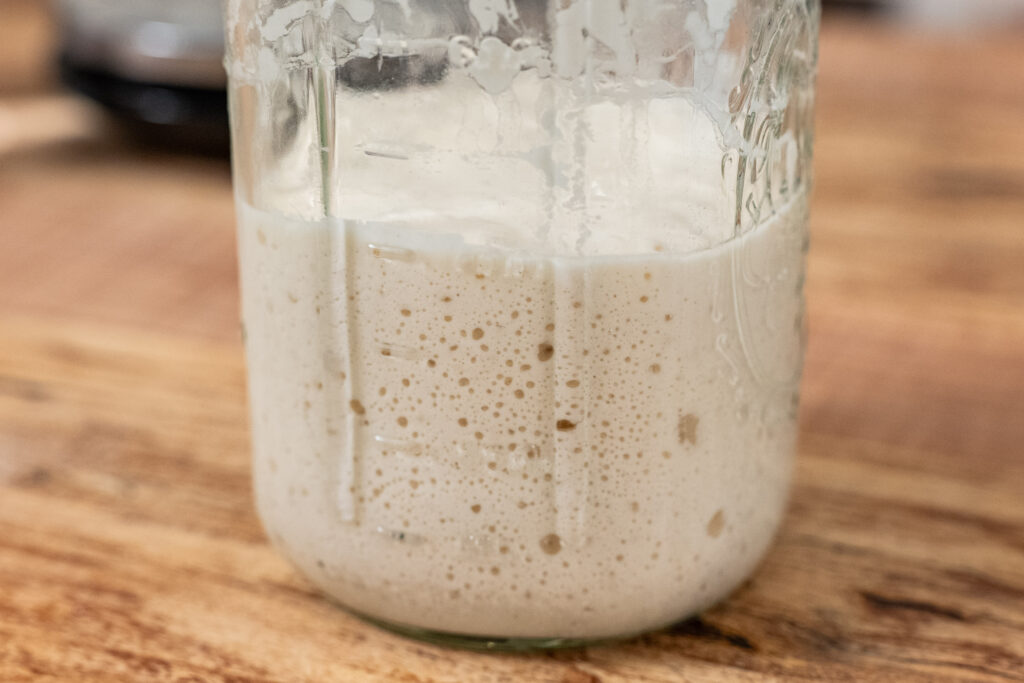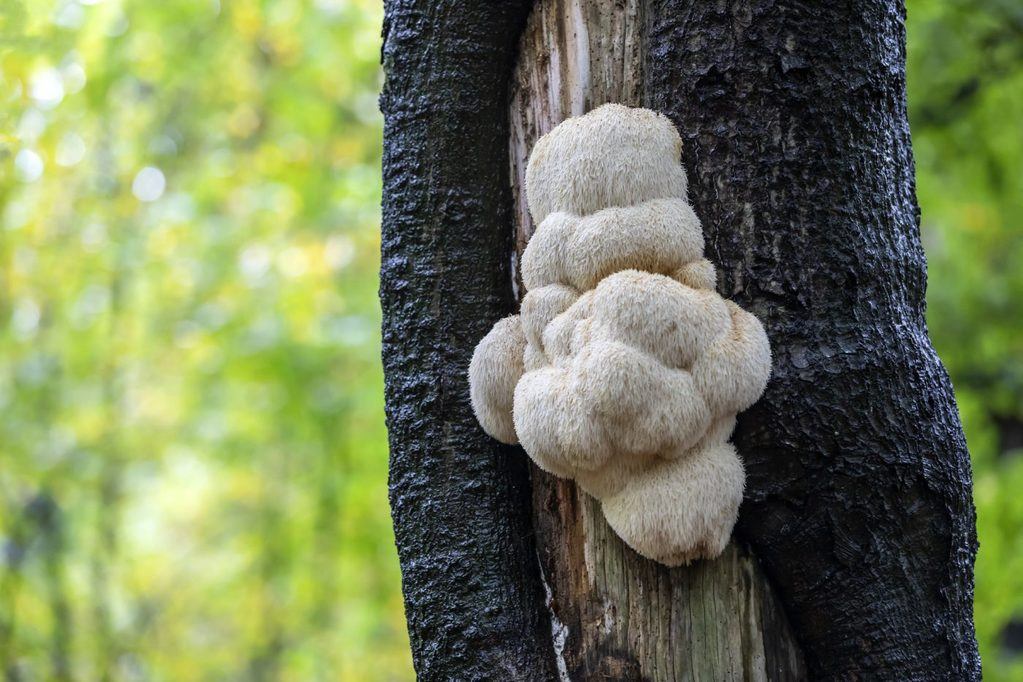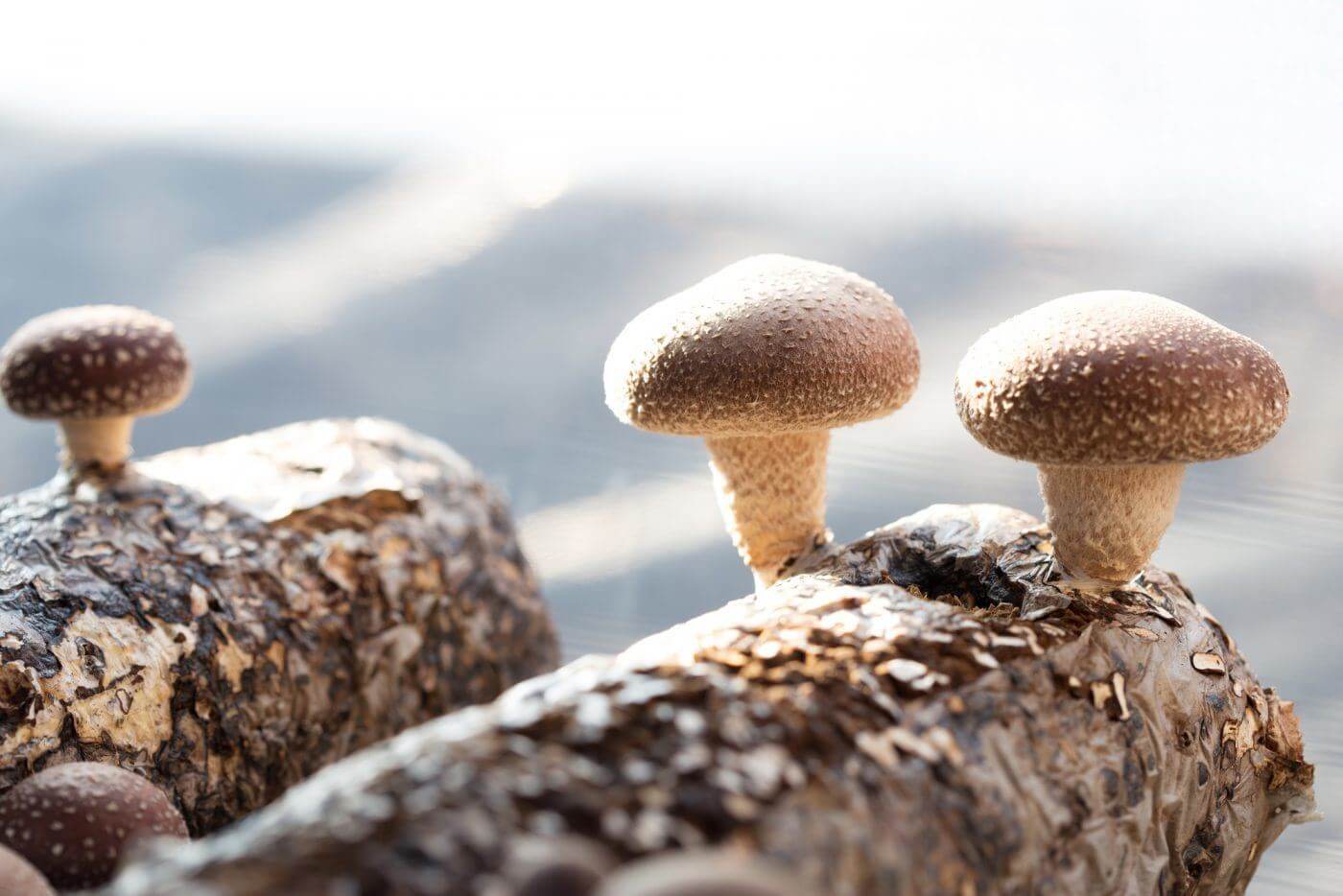
Learning how to grow mushrooms at home opens up an entirely new world for food production (as well as medicine) in your backyard. There are many health benefits of mushrooms and they are an easily sourced food medicine.
Many varieties of mushrooms can be grown at home in many different environments. Pairing the correct variety with the correct growing medium is key.

🍞 Struggling With Sourdough?
If your starter won’t take off, your loaves are dense and hard, or sourdough just flat-out overwhelms you…
👉 I’ll show you how to fix all of it.
Join my FREE live workshop and learn how to make a bubbly, active starter—the right way, from Day One.
🗓️ Jan 12 @ 1pm PT
Today I have Mary Ellen from Field & Forest on the show. Mary Ellen Kozak founded Field and Forest Products in 1983 with her future spouse and business partner, Joe Krawczyk. She has combined her profession in mycology with her academic background in agronomy, integrating a longtime passion for plant-based food systems with fungi.
Listen in below to the full podcast, Episode #268 How to Grow Mushrooms at Home, of the Pioneering Today Podcast, where we don’t just inspire you, but give you the clear steps to create the homegrown garden, pantry, kitchen, and life you want for your family and homestead.
Table of Contents[Hide][Show]
- Why Grow Mushrooms
- How to Grow Mushrooms Outdoors
- Inoculating Logs for Mushroom Beds
- How much space do you need to grow mushrooms
- Best Size Logs
- Type of Wood to Use for Growing Mushrooms
- Best Wood for Specific Mushroom Types
- Best Location for Mushroom Growth
- Mushrooms that Grow in Full Shade and Wood
- Mushrooms that Grow in Partial Shade in Wood Chips or Straw
- Mushrooms that Grow in Compost
- More Posts You May Enjoy
Why Grow Mushrooms
Melissa: I love mushrooms. They’re one of my favorite foods as far as taste goes but they have other advantages. Why would we want to have them in our garden landscape?
Mary Ellen: In our 40 years of business we’ve seen a transition from questions about how to get rid of mushrooms in the lawn to now being asked how to grow them. As far as the medicinal value of mushrooms and how they’re important in our landscape, especially in our woodland environments, research has really been stepping up how trees communicate through mushrooms. There’s a whole load of information that’s coming out about mushrooms or fungi that’s very interesting.
30 to 40 years ago we really didn’t know how to cultivate mushrooms outdoors or in a home setting except maybe kits. So it’s been really great to see the increasing interest as well as the improvement in technique. As well as find varieties that we can cultivate in an outdoor environment, commercially or for our selves for our families to can, pickle and things like that.
Melissa: To verify, a kit is like a little pressed log that has spores in it that you keep moist and where you keep it between 50 to 70 degrees Fahrenheit. Once it was done it wouldn’t continue to grow more. So it was a controlled environment. This is the only way we’ve grown mushrooms up to this point. What you’re talking about is cultivating mushrooms outside which will grow more than once, correct?
Mary Ellen: Right. That is what is so cool about mushroom cultivation is that a person that’s really involved with it for a lot of years, and that can be amateur growers, they’ll find a fungi that do well outdoors and look at the environmental factors in the substrate, like a tree or soil, and try to bring that into the lab. They’ll try to make spawn out of that and start to cultivate them outdoors and indoors, trying to replicate those same environmental factors, try to find out the best recipe for the mushroom cake to grow the mushroom on.
For the person who just wants to grow them indoors there are the kits that are available, but what I’m talking about is using spawn (mushroom seeds) and planting those into substrates that we know will host the fungal growth. Then nurturing them along and growing them outdoors. There are so many benefits to growing them outdoors.
How to Grow Mushrooms Outdoors
Melissa: I’m definitely interested in the outdoor growing. When we grew Lion’s Mane from the kit the only space available in our small home was the bathtub in the master bath, so we weren’t able to use the bathtub while we were growing them. I think outdoor would be much better because I could grow more and it just feels more natural. I assume that you would have them grow back in the same place because the spores would replicate. This assumption is based on what happens in the wild where they come back in the same spot when the season and conditions are correct for that to occur.
Do they come back seasonally in cultivated beds?
Inoculating Logs for Mushroom Beds
Mary Ellen: Usually it’s best to replant. The reason is that mushrooms are a little bit different than plants is that you’re putting them in a finite substrate.
Substrate is the surface the mushroom grows on, logs from green wood, wood chips or straw, and compost
An example is the wood decay fungi. These are really successfully grown for the outdoor cultivator because the substrate is really natural as it would happen in the wild. For example, shiitake is one of the most popular fungi to grow on wood logs. Once you actually plant, or what we call it – inoculate, that log that wood is a finite food source for the shiitake spawn.
It’s going to grow and start to digest and decay all of the wood. Once it reaches a certain point in the decay cycle and it gets the right fruiting cues usually through weather and how far along it has decayed the wood.
Once those right conditions occur it will start to fruit. As soon as the log is all used up and all of the nutrition has been digested and left the log in the form of the delicious mushroom then the substrate is kaput and is meant for the forest floor or compost pile which will further become fodder for other fungi on the forest floor. It’s a really great woodland type cycle to engage in. Plus you get some really great mushrooms out of it.
I guess to answer the question, hard to use that log because it’s already gone from the fruiting phase. It’s not in the seeking phase where the spawn is looking for more substrate to digest. It’s usually pretty well done by the time the log is done. We do have some other fungi though that you can increase and replant year to year but you have to move the old bed to the new bed if possible.
How much space do you need to grow mushrooms
Melissa: What size log do you have to use? What’s the smallest you can use and still be successful? If we use shiitake for example, how much space do we need to have a shiitake bed? When I envision a log it’s something large.
Mary Ellen: I bet your idea of a log is different than my idea of a log. We’re in the Great Lakes area and we get some pretty big trees but I have a feeling there in your neck of the wood of the Pacific Northwest that your trees are substantially larger than our trees.
Best Size Logs
You can take branch wood or small-diameter trees. You’re going to want something, for ideal shiitake cultivation, that’s somewhere between four to six inches in diameter and around 40 inches, a meter long. That’s the classic size.
A lot of it has to do with bark characteristics like how thick the bark is. Also, the log will dry out less fast if it’s a bigger log.
The industry standard that’s been happening since 1940 I think when the Chinese and then the Japanese started really mechanizing for cultivation is to go for the four to six-inch diameter 40-inch long piece of wood. Just because the bark is thick enough and there’s enough sapwood. All these various factors and the biggest factor for me is that you can lift it without hurting yourself.
Shiitake cultivation on the commercial level on wood logs is often very labor-intensive, a lot of hand lifting, handling these logs one after the other. So you definitely want to make sure that you’re not struggling to lift up this really huge log. You can certainly go larger than the four to six inches in diameter.

Not only a good thing for our woodland management to remove some of these cull trees or branches that will come down but it’s also we can say we grew food out of wood. You can make some really good food out of wood in the form of mushrooms.
Type of Wood to Use for Growing Mushrooms
Melissa: Are there any trees that are not good to pick for cultivating mushrooms? Any species we should stay away from?
Mary Ellen: The most important thing to remember is that it has to be living fresh greenwood. If the wood is already dead then chances are that something else has invaded it and the moisture content is a little bit off.
As soon as the tree it cut or branch removed it starts to dry very slowly. So what you want to do is plant it or inoculate it so that the spawn just follows that zone of drying. That way we can be sure to colonize the whole thing with a fungus of interest and know that the log is going to last, let’s say, an inch in diameter will give you about a year’s worth of production. So an eight-inch log will give me mushrooms for eight years. In the end, they last a long time which is great.
Aside from the fact that you want to use fresh disease-free wood you have to be purposeful about what you’re trying to do. You certainly don’t want to take out any magnificent shade trees that have other value to you or other value in the landscape just for mushroom cultivation. You want to use wood that’s poor quality that you can’t use otherwise, such as wood that came down in a storm.
Also, you need to be species-specific. The right type of wood is matched with the correct type of fungus. If you’re growing lion’s mane, for example, the two species of wood that we really like are sugar maple and beech which are harder woods.
Best Wood for Specific Mushroom Types
A lot of the fungi do like the harder woods.
- Lion’s Mane – Sugar Maple, Beech
- Shiitake – Oak, Sugar Maple, Mountain Maple, Ironwood, Basswood
For a more detailed list of what tree species to use for which mushroom variety you can find more information in our instructional sheet on Selecting Logs for Mushroom Growing.
In general, we can say that things like Shiitake, Lion’s Mane, Olive Oysterling, do well with hard hardwoods. Oyster mushrooms grow really well on soft hardwoods. Hard softwood does really well with Nameko. We’ve been looking around for more fungal species that you can cultivate successfully on pine, spruce or hemlock because sometimes that’s all that people have. So far we feel really good about Nameko but that’s as far as we’ve gotten.
Melissa: That’s fascinating because I’ve seen Lion’s Mane on conifers that are at a higher elevation.
Mary Ellen: There’s so much that we don’t know. I think there are some species in the Hericium species, which include Lion’s Mane and Comb Tooth, which grows on conifers. I wonder if it might be that or desperate fungi.
Location Matters
Best Location for Mushroom Growth
Melissa: Now that we know more about the type of wood and size to use, is there a best place where they would grow best? Do mushrooms need a certain amount of indirect or direct sunlight per day? What things should we take into consideration the location of growing mushrooms?
Mary Ellen: We have three different levels of mushroom niches, like where they like to grow.
Mushrooms that Grow in Full Shade and Wood
First, the easiest to grow is the wood decay fungi that are the primary decomposers. Those are the ones that will take raw wood that comes down. These are the woodland fungi, such as Shiitake and Lion’s Mane, that like a shaded environment.
Mushrooms that Grow in Partial Shade in Wood Chips or Straw
The next level down is more a litter decomposer. They do chips or even pine needles. Our favorite one in that group is by far the Wine Cap Stopharia. Those do really well in the open or on the edges of woodlands, on the edge that gets some dappled shade. In the orchard setting, we do it underneath our blueberry plantings in the garden.
We also do them on the north side of our greenhouse. They like more airflow and that’s done on a three to four-inch wood chip or straw bed. They’re still kind of a primary decomposer in that they like raw wood and they’d like it to be relatively fresh, but they can also tolerate wood that’s been a little bit composted, like wood chips that are a little over a year old.
Mushrooms that Grow in Compost
The last category is more of a compost decomposer. It takes the digested wood from other fungi. Almond Agaricus is a great one for this and is definitely a compost loving mushroom. You would grow this on compost beds in the garden or at your pile. We grow it in a polyculture, or companion planting, underneath tomato plants and squash.
They’re more like the button mushroom or portabello but they’re much more flavorful. They have an almond aroma and have more medicinal value than the usual white button mushroom. We recently posted a video on YouTube on Companion Planted Squash and Reishi and Almond Agaricus.
Look at your landscape and see where you have your best substrate that is suitable for the mushroom that you want to grow.
We talked about that as far as tree species matching with the fungus but we also want to match for other substrates as well. Do you want to use wood chips, straw compost? Make that decision based on what you have available to you.
One of the undervalued things about mushroom cultivation just how engaged you are with the natural forest environment. There’s a physiological benefit to growing mushrooms that is totally unrelated to consumption.
Where to find Mary Ellen
Resources
Tree Species for Mushroom Variety Chart
Companion Planted Squash and Reishi
More Posts You May Enjoy
- Where to Find Morel Mushrooms
- How to Plant and Grow Potatoes (In Containers or the Ground)
- Growing Onions From Seed
- How to Plant Garlic (Fall Garlic Planting)
- How to Grow Tomatoes
- How to Plant Strawberries- 5 Tips to Success
- How to Grow (and When to Pick) Pole Beans
- How to Grow Swiss Chard in your Fall Garden
- How to Grow and Plant Beets



